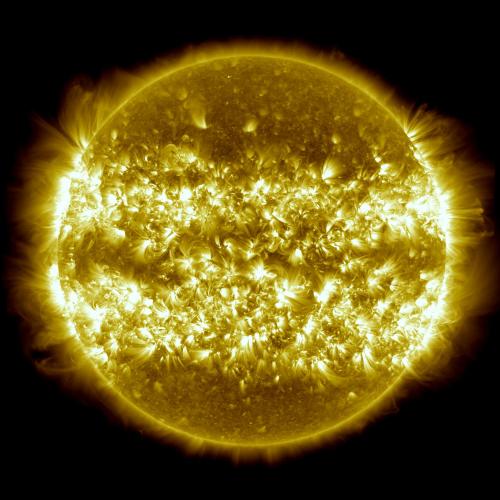|
ik3iul
Utente
 
Regione: Veneto
Città: Peschiera del Garda

102 Messaggi |
 Inserito il - 06/09/2014 : 22:06:36 Inserito il - 06/09/2014 : 22:06:36



|
Immagine:

38,21 KB
Now, researchers have discovered a new marker to track the course of the solar cycle—brightpoints, little bright spots in the solar atmosphere that allow us to observe the constant roiling of material inside the sun. These markers provide a new way to watch the way the magnetic fields evolve and move through our closest star. They also show that a substantial adjustment to established theories about what drives this mysterious cycle may be needed.
Historically, theories about what's going on inside the sun to drive the solar cycle have relied on only one set of observations: the detection of sunspots, a data record that goes back centuries. Over the past few decades, realizing that sunspots are areas of intense magnetic fields, researchers have also been able to include observations of magnetic measurements of the sun from more than 90 million miles away.
"Sunspots have been the perennial marker for understanding the mechanisms that rule the sun's interior," said Scott McIntosh, a space scientist at the National Center for Atmospheric Research in Boulder, Colorado, and first author of a paper on these results that appears in the September 1, 2014, issue of the Astrophysical Journal. "But the processes that make sunspots are not well understood, and far less, those that govern their migration and what drives their movement. Now we can see there are bright points in the solar atmosphere, which act like buoys anchored to what's going on much deeper down. They help us develop a different picture of the interior of the sun."
Over the course of a solar cycle, the sunspots tend to migrate progressively lower in latitude, moving toward the equator. The prevailing theory is that two symmetrical, grand loops of material in each solar hemisphere, like huge conveyor belts, sweep from the poles to the equator where they sink deeper down into the sun and then make their way steadily back to the poles. These conveyor belts also move the magnetic field through the churning solar atmosphere. The theory suggests that sunspots move in synch with this flow – tracking sunspots has allowed a study of that flow and theories about the solar cycle have developed based on that progression. But there is much that remains unknown: Why do the sunspots only appear lower than about 30 degrees? What causes the sunspots of consecutive cycles to abruptly flip magnetic polarity from positive to negative, or vice versa? Why is the timing of the cycle so variable?
Read more at: http://phys.org/news/2014-09-clues-solar.html#jCp
|
Silverio Ortolani |
Modificato da - ik3iul in Data 06/09/2014 22:09:05
|
|
